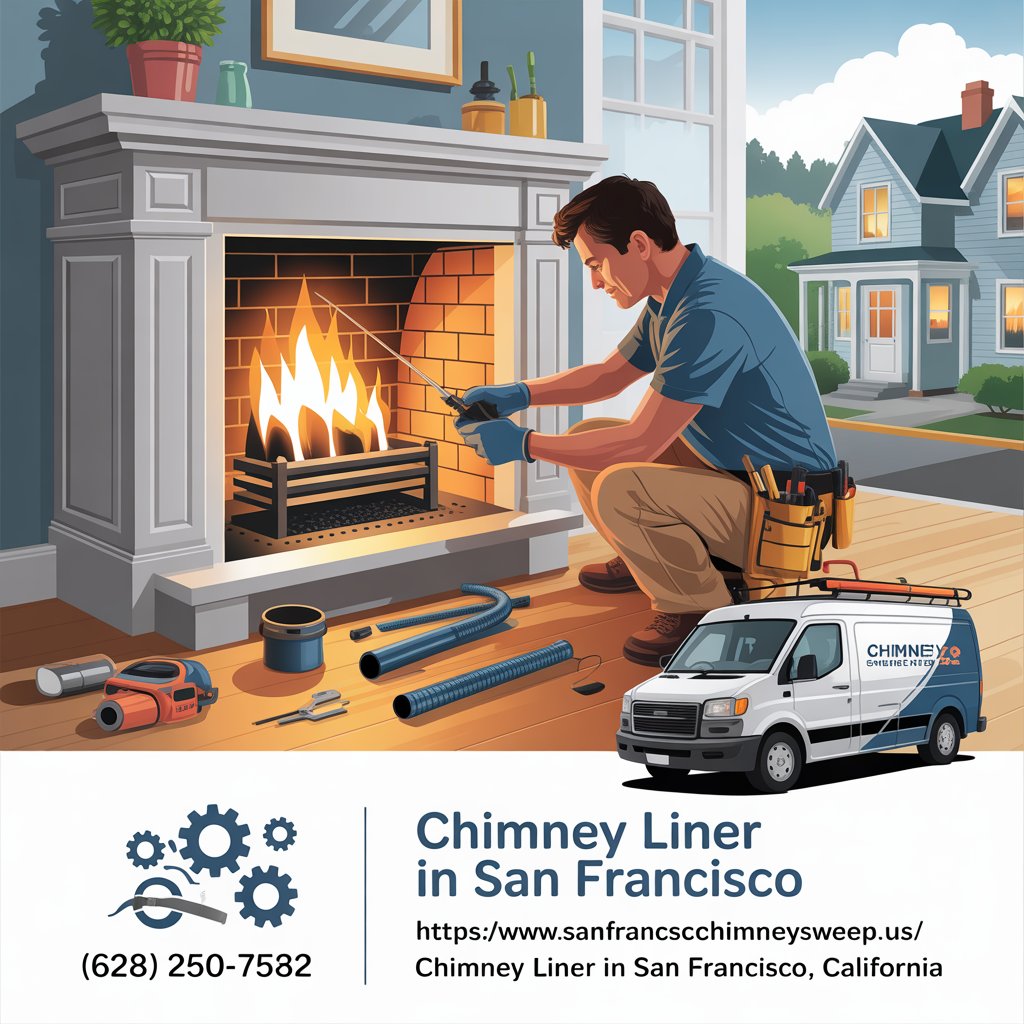If you’ve got a fireplace in your home, you probably already appreciate how comforting it is to curl up beside it on a chilly evening. But beneath all that cozy ambiance is a structure doing some serious work your chimney. And inside that chimney? A critical part that most homeowners forget about: the chimney liner. It might be out of sight, but a damaged chimney liner is not something you want to ignore. Let’s dig into what happens if you leave a cracked or corroded liner untouched, and what you can do to prevent bigger (and more expensive) problems down the line. If you’re a homeowner thinking about Chimney Liner in San Francisco, this guide is for you.
The Chimney Liner: A Quick Breakdown
First things first what is a chimney liner, and why does it matter?
A chimney liner is a protective barrier inside your chimney that serves three major purposes:
- Protects your home from heat: It keeps the high temperatures and flames from escaping the chimney and damaging nearby walls or wood framing.
- Protects the masonry: It blocks corrosive byproducts of combustion (like soot, creosote, and moisture) from breaking down your bricks and mortar.
- Improves efficiency: A properly sized and intact liner helps your stove or fireplace burn cleaner and vent smoke effectively.
There are three main types of chimney liners: clay tile, metal (typically stainless steel), and cast-in-place. Each comes with its pros and cons, but no matter the type, once it’s damaged things can get dangerous.
Warning Signs Your Chimney Liner Might Be Failing
You don’t need to climb onto your roof or peek inside your chimney to spot signs of liner trouble. Here are a few red flags that are worth paying attention to:
| Warning Sign | What It Could Mean |
| Smoke entering your home | Blocked or deteriorated liner |
| Foul, musty smell near the fireplace | Moisture or creosote buildup |
| Crumbling mortar or damaged bricks | Liner failing to protect masonry |
| Reduced fireplace performance | Possible liner cracks or blockages |
| Flakes or pieces of tile/metal in firebox | Liner deterioration |
If you notice any of these, it’s worth calling a chimney professional to take a closer look.
The Cost of Ignoring It (And It’s More Than Money)
So what actually happens if you know there’s a liner problem and decide to put it off?
1. Fire Risk Skyrockets
This is the big one. A damaged liner can allow intense heat and sparks to reach flammable parts of your home. That might sound dramatic, but it’s one of the leading causes of chimney fires. And chimney fires don’t always look like dramatic flames shooting out of your roof. Some burn quietly, slowly damaging your chimney until one day, disaster hits.
2. Toxic Fumes Enter Your Living Space
A cracked or corroded liner can let dangerous gases like carbon monoxide leak into your home. This stuff is colorless, odorless, and extremely harmful. Even low-level exposure over time can lead to health issues like headaches, nausea, and fatigue.
3. You’ll Pay More Later
Putting off liner repairs might feel like a way to save money now, but it usually backfires. Damage spreads, masonry starts to fail, and soon you’re looking at full chimney rebuilds or emergency services both of which cost way more than a simple liner replacement.
4. Home Insurance May Not Help
If your chimney causes a house fire and an investigation shows you ignored known issues (like a damaged liner), your home insurance might not cover the damage. That’s a risk most homeowners can’t afford to take.
“Your chimney is a silent worker,” says fire safety inspector Mark Drayton. “But once that system starts to fail especially the liner you’re inviting risk into your home. The sooner you fix it, the safer you are.”
Repair or Replace: What to Do About a Damaged Liner
Not all chimney liner problems require a full replacement. Here’s how a pro typically decides what action to take:
| Condition | Recommended Action |
| Minor cracks or wear | Sealant or patching |
| Severe corrosion or missing sections | Full liner replacement |
| Improperly sized or outdated liner | Upgrade to modern standard |
| Poor performance despite cleanings | Inspection and possible relining |
Your best bet is to schedule an inspection many chimney companies offer camera scopes that go right inside the flue to show you exactly what’s happening.And if you’re in a city like San Francisco where the climate brings a mix of salty air and rainy winters, your liner might be aging faster than you think. Having a certified inspection once a year is the easiest way to stay ahead of the game.
Tips to Keep Your Chimney Liner in Good Shape
Once you’ve repaired or replaced a damaged liner, a little care goes a long way:
- Burn only seasoned wood or approved pellets – Wet or treated wood increases creosote buildup.
- Schedule annual cleanings and inspections – Don’t skip these!
- Use a chimney cap – It keeps out rain, debris, and critters.
- Check for moisture – If your chimney smells musty, it’s time to investigate.
Conclusion: Don’t Wait—Act Before It’s Too Late
Your chimney might be out of sight most of the year, but that doesn’t mean it should be out of mind. A damaged liner isn’t just a maintenance issue it’s a safety hazard. Ignoring it can lead to fires, carbon monoxide poisoning, costly repairs, or worse. With a bit of regular care and a professional check-up when needed, you can keep your home warm and safe all winter long.And if you’re looking for trustworthy services to inspect or repair your Chimney Liner in San Francisco, now’s the perfect time to schedule an appointment before colder months roll in.
Read More:Chimney Sweep



